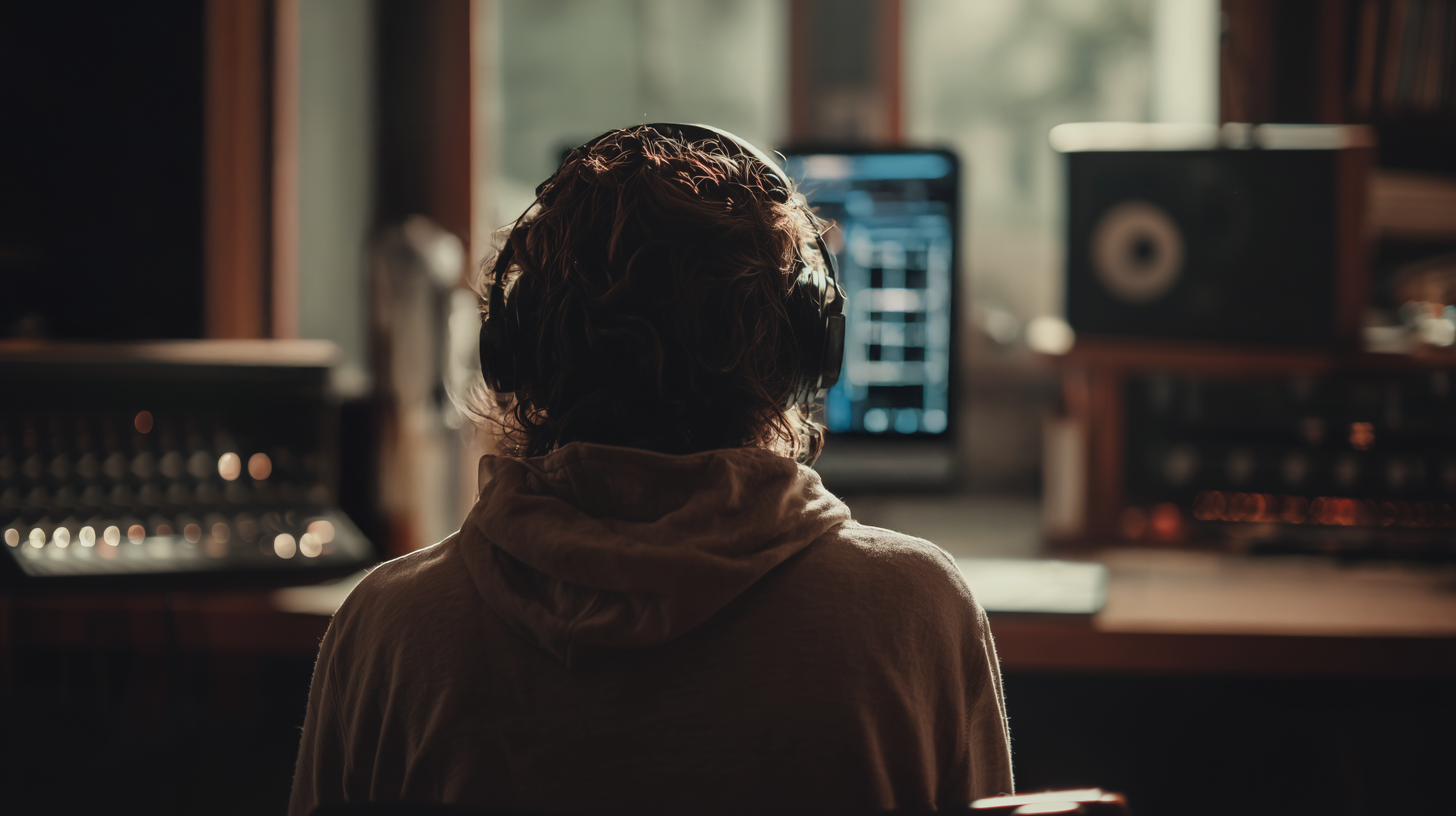What to Listen For When You’re Recording
If you want your podcast to sound alive, you have to learn how to listen – not just to what’s being said, but to what’s happening underneath.
Most people think storytelling starts in the edit. It doesn’t. It starts the moment you hit record. In this post, we’ll explore how to develop your story radar – the ability to hear turning points, tension, and emotion in real time so your interviews and solos come to life naturally. Whether you’re recording a brand show, a founder interview, or a narrative piece, mastering this kind of listening changes everything.
Why listening is your most powerful production tool
Podcast hosts and producers often focus on what to ask next. But the best ones focus on what they just heard.
Good listening reveals the story beats as they unfold – and helps you respond in ways that pull more depth, detail, and authenticity from your guest.
It’s what separates a conversation that’s fine from one that becomes memorable.
When you learn to listen at this level, you start catching three things others miss:
Emotional shifts – a pause, a laugh, a hesitation.
Unexpected details – a phrase that hints at something bigger.
Story openings – when someone moves from facts to feeling.
Those are the moments that make great tape.
How to train your story radar
Think of story radar like muscle memory – you build it through repetition.
Here’s how to sharpen it:
Listen with curiosity, not confirmation.
Don’t just validate what you expect to hear. Follow the thread of surprise.Note inflection, not just information.
When a guest’s tone changes – softer, faster, uncertain – that’s usually where the story lives.Stay silent longer than feels comfortable.
People fill silence with truth. Let them.Mark story moments live.
Clap softly or make a note when something resonates. That will save hours later in the edit.Ask “what happened next?” or “how did that feel?”
These two questions unlock emotional narrative faster than any other.
When you start hearing these signals, you stop chasing “content” and start discovering story.
The art of being present while recording
One of the hardest skills for any host – especially in branded shows – is balancing the dual role of interviewer and strategist.
You want to guide the conversation toward your show’s goals, but you also need to stay open to wherever the moment leads.
The trick is to hold structure lightly. If you know your shape (Problem–Tension–Solution–Takeaway), you can improvise inside it.
Don’t panic if your guest drifts. Some of the best insights come when people feel they’ve stepped off the script.
Your job is to listen for that change in energy – the moment someone stops describing and starts revealing.
How to spot audio signals of story
If you’re producing as well as hosting, there are literal signals to listen for that make editing easier later:
Emotional peaks – laughter, sighs, emphasis.
Contrast – when tone or pacing shifts mid-sentence.
Specificity – when a guest moves from general (“we learned a lot”) to specific (“I realised it when the prototype failed at 2 a.m.”).
Pauses – where silence does the heavy lifting.
Make a quick mental note – or if you’re recording in Descript, drop a marker at that timestamp. Those moments are gold when you’re shaping the narrative later.
Collaboration between host and editor
When you’re working with a production partner, these notes are invaluable.
A good editor can only elevate what’s been captured. If the story beats are already there in the raw tape, you’re saving both time and budget.
Share your notes, emotional cues, and reactions. Even a one-line comment – “this is where she reveals the core insight” – can help the editor frame the arc.
Storytelling is a team sport, and recording is where you set the team up to win.
Practice: Record to listen, not to speak
The next time you hit record, try a simple shift: Don’t aim to extract answers – aim to discover moments.
When you listen this way, your guest feels seen, your story deepens, and your final edit practically assembles itself.
Because the best podcasts aren’t made in post-production. They’re made in the moment.
Key Takeaways
Storytelling starts the moment you press record.
Listen for emotion, inflection, and surprise.
Mark story moments as they happen – save time in post.
Silence is your editing ally.
Collaboration between host and editor amplifies story quality.
Final thought
Recording is your first edit.
If you can hear the story as it’s happening, your audience will feel it – and that’s the difference between good tape and great storytelling.
Want to sharpen your team’s story radar or refine your recording process? Reach out at hello@1878.studio.

